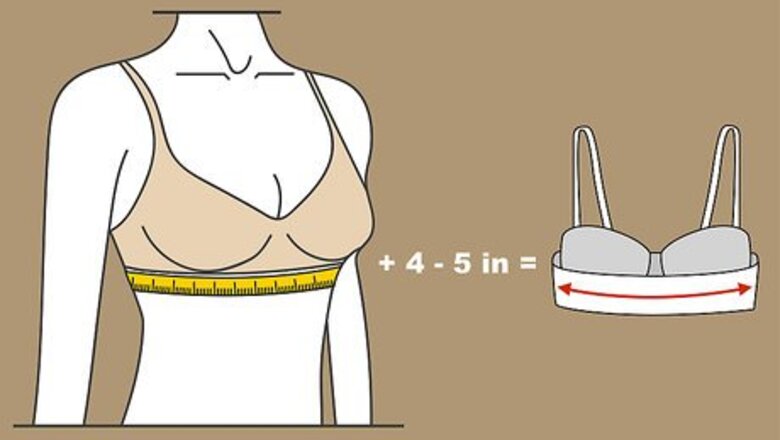
views
Designing Your Bra
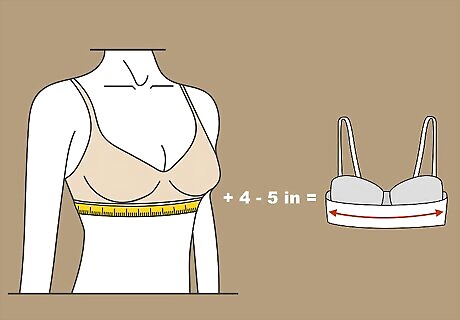
Find your bra band size by adding 4–5 in (10–13 cm) to your ribcage measurement. Wrap a soft measuring tape snugly around the part of your ribcage just below your armpit. Then, add 4 or 5 in (10 or 13 cm) to this number to make it even. This is your bra band size. For example, if you measure around your ribcage and get 31 in (79 cm), then adding 5 in (13 cm) to that number would give you a bra band size of 36 in (91 cm). Always double check your measurements to ensure your bra will fit correctly when your'e finished.
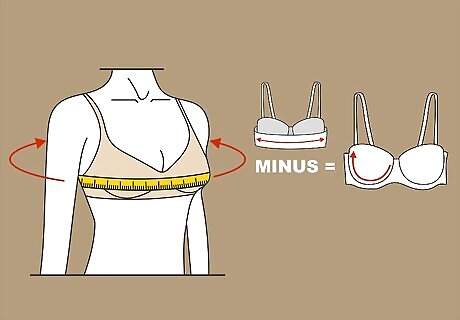
Subtract the bra band size from your full chest measurement. To find your cup size, measure around the fullest part of your bust. Then, subtract your bra band size from the full bust measurement to get your cup size. For example, if your full chest measurement is 38 in (97 cm) and your bra band size is 36 in (91 cm), then the size difference would be 2 in (5.1 cm). Each 1 in (2.5 cm) of difference between the 2 measurements indicates a cup size. The differences and corresponding cup sizes include: 0 in (0 cm) indicates a cup size of AA 1 in (2.5 cm) is an A 2 in (5.1 cm) is a B 3 in (7.6 cm) is a C 4 in (10 cm) is a D 5 in (13 cm) is a DD (also referred to as E) 6 in (15 cm) is a DDD (or F) 7 in (18 cm) is an FF
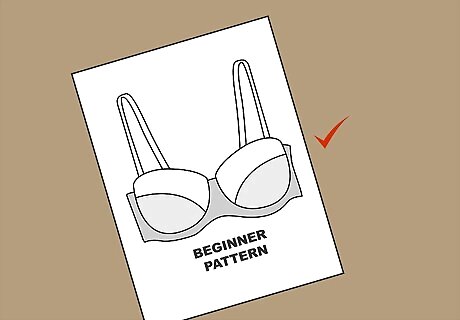
Choose a pattern that suits your personal style. There are many different bra styles available. Browse patterns at your local craft supply store to find the perfect style for your needs. Some common bra types include: Full band. This bra features a band that goes all the way around your bust with cups that are set into it. A full band bra provides excellent support, so it is a good option for full-busted women. Padded push-up. This bra offers medium support and cleavage boosting benefits. You might like a padded push-up bra if you have an average or small bust size or if you want something that will complement a low-cut top or dress. Front closure with a partial band. This type of bra offers medium support along with the ease of a front clasp that makes it easier to put the bra on and take it off. You might try this bra style if you have a small to medium-sized bust or if you have trouble reaching behind you to fasten and unfasten your bra. Sports bra. This is a wireless, close-fitting bra that offers full support and compression for engaging in physical activities. This type of bra is suitable for any bust size.Tip: Select a pattern that is labeled as “easy” or “beginner” if this is your first bra. This will help to make your first bra-making experience as simple and straightforward as possible.
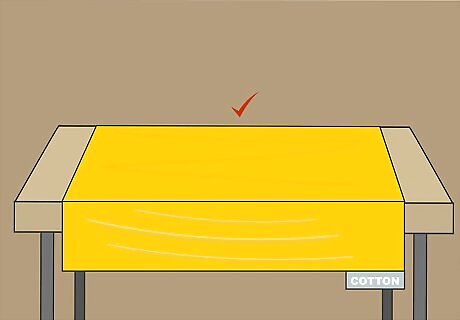
Select a stretch fabric in the desired color. Bra material should have a bit of stretch to it so that the fabric can conform to your body. This will also help to ensure that any minor flaws in the bra are less noticeable. Check your pattern for fabric recommendations and to find out how much fabric you will need. Some good fabric options include: 2-way stretch nylon or Lycra satin Lace Tricot Stretch satin Cotton/Lycra blend Cotton knits
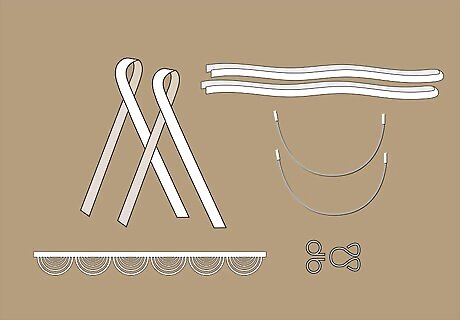
Choose hook and eye closures, straps, wires, and other accents. The pattern you choose will indicate what extras you need to buy to make the bra. This may include a certain number of closure pieces, a specific type of strap elastic, bra underwires, or decorative touches, such as ribbon, fringe, or beads. Purchase all of the required items listed on your pattern to ensure that you can complete the bra. If you decide to make an underwire bra, then you will also need to purchase wire casing, also known as channeling. This will cover the wire and prevent it from poking into your skin while you wear the bra. You might be able to salvage some of these items from old bras. For example, you could use underwires, straps, and hook and eye closures out of an old bra. Just make sure that everything is in good condition or your bra might not fit properly.
Cutting the Fabric
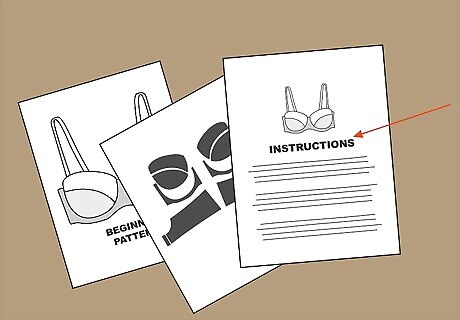
Read the instructions that came with your pattern. Patterns include specific details about how to properly execute the design. Reading and understanding the pattern is an essential part of sewing your bra, so don't skip it! If there is anything you don't understand about the pattern's instructions, visit a craft supply store or an online sewing forum and ask about it.
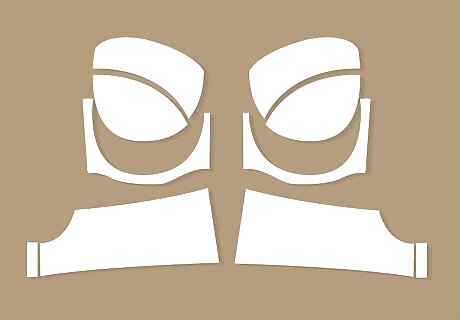
Cut out the paper pattern pieces in the desired size. Locate the size lines on the pattern pieces and cut out all of your pieces in the desired size. Use a sharp pair of scissors to cut along the lines of the paper pattern pieces. Go slowly and be careful not to create any jagged edges along the pieces. Lay the pieces out flat on a clean work surface as you cut them. Tracing the outline of the desired size lines can help to make it easier to cut them. Use a highlighter or red marker to trace over the lines before you cut.
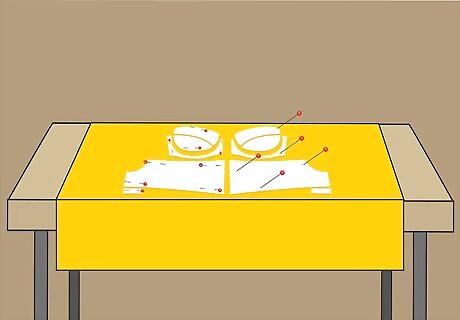
Pin the paper pattern pieces to your fabric as indicated by the pattern. Place your bra fabric on a flat work surface and fold it as indicated by your pattern. Smooth out the fabric so that there are no lumps or bumps. Then, place the paper pattern pieces on the fabric according to the pattern's instructions. Insert pins to hold the paper pattern pieces in place. If the fabric you are using is delicate, then you might want to place weights onto the paper pattern pieces to hold them in place, rather than using pins. You can use pattern weights, which are available in craft supply stores, or lay a heavy item on the paper pattern pieces, such as a paper weight, a can of vegetables, or a few small stones.
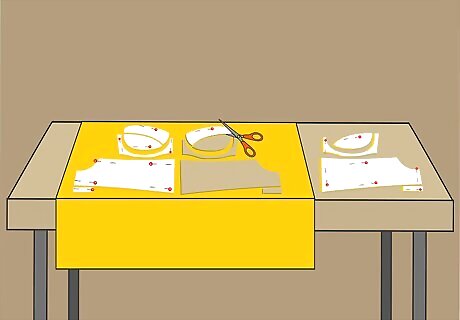
Cut along the edges of the pattern pieces. Use a sharp pair of fabric scissors to cut the fabric along the edges of the paper pattern. Make sure that you cut through both layers of fabric and avoid creating any jagged edges. Keep the paper pattern pieces on top of the different types of fabric pieces to avoid mixing them up. Make sure to cut out any notches that are included in the paper pattern pieces. These will make it easier to line up the pieces when you get to that stage.Tip: Using a rotary cutter and plastic cutting mat may make it easier to cut delicate or slippery fabric. If you have a rotary cutter, then you may want to use it instead of scissors.
Assembling the Bra
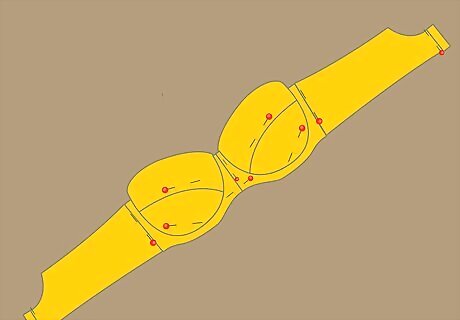
Pin the fabric pieces together as indicated by the pattern. Locate the like pieces that you need to sew together. Check your pattern's instructions to be sure about what pieces should be connected. Then, place the pieces together as your pattern describes. If your pattern instructs you to pin pieces together in a way that will leave raw edges, don't worry about the raw edges showing. These will be hidden after you sew the elastic onto the edges of the bra.
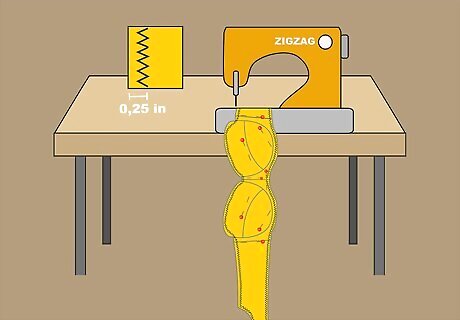
Sew a zigzag stitch 0.25 in (0.64 cm) from the the edges of the pieces. The zigzag stitch is often used for bras since it will stretch with the fabric. Set your sewing machine to the zigzag stitch setting and sew along the edges of your pinned pieces as instructed by the bra pattern. You may need to sew several piece together depending on the complexity of your pattern. Some bra patterns feature only a few parts that you sew together, while others may include a dozen or more.
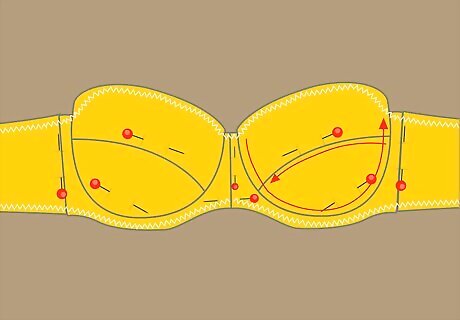
Sew the bra cups onto the bra band. Once the individual bra pieces are together, you will likely need to connect the bra band and cups. Depending on the type of bra you are making, you may need to connect multiple pieces of the band and cups. Follow the instructions included with your pattern to make sure you are connecting the right parts. Go slowly when you sew the bra pieces together. You may even want to do a baste stitch before you do your permanent stitch to ensure that everything looks how it should.
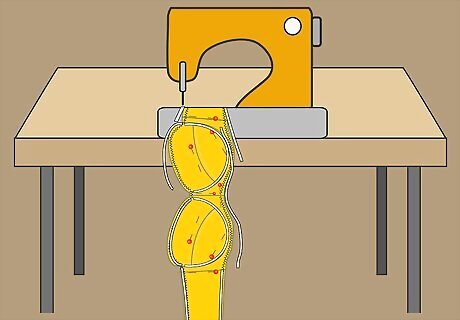
Sew the elastic onto the edges of the bra band and cups. Follow your pattern's instructions for how to attach the elastic to the bra cups and bra band. Pin the elastic to the edges of the bra band and cups so that the right (print or outer) sides of the fabric and elastic are facing each other. Then, sew a zigzag stitch about 0.25 in (0.64 cm) from the raw edges. Once you've done that, turn the elastic so that the raw edges are hidden and the elastic is inside of the bra and stitch along the edges again. Attaching the elastic will hem the edges of the bra and hide any raw edges leftover from sewing the bra pieces together.

Add the straps to the bra cups and band. Depending on the type of bra you are making, you may be able to sew the elastic right onto the bra, or you might need to attach a special ring and slider to make the bra adjustable. Check your pattern's instructions to be sure and follow them carefully. Use the zigzag stitch to sew across the area where the elastic and bra meet 3 to 4 times to make them extra secure. Make sure to use strap elastic for the straps. This type of elastic is not as stretchy as regular elastic and it will provide more structure and support.Tip: Some patterns call for a special type of decorative elastic called “picot elastic.” This type of elastic has lace-like edging that looks pretty.
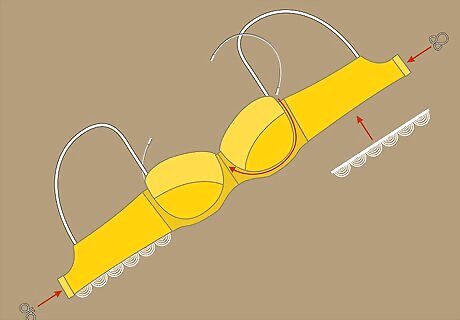
Finish the bra with closures and any extra decorative touches you want. Make sure that you have all of the necessary closures and other items to finish your bra. These are usually listed on the back of the pattern envelope. Bras often close with 2 or more hook and eye clasps, but a front closure bra will require a more secure closure, such a sliding bar closure.










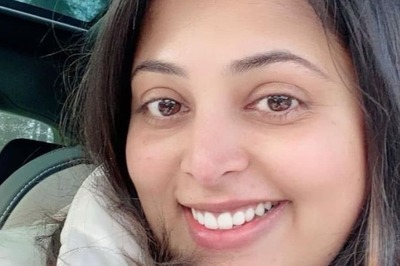

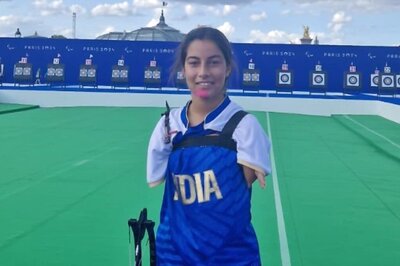




Comments
0 comment